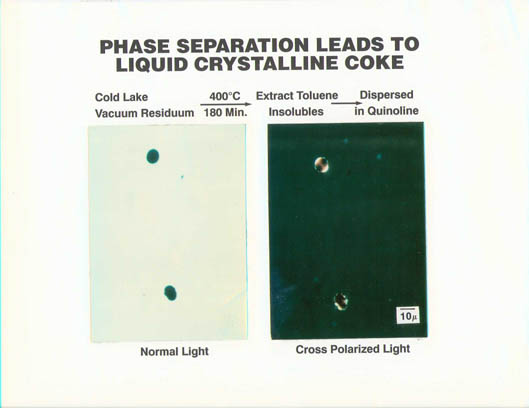Got a Refinery Fouling Problem? Contact Soluble Solutions for the Answer.
There is a 90% chance that a refinery fouling problem is one of the six most common causes that can be quickly diagnosed by analysis of the foulant and oil flowing through the fouled unit. If it is one of the 10% less common causes, the fouling problem will still be diagnosed by a systematic procedure that may take a little longer. Once diagnosed, foulant precursors are traced to the source to arrive to a number of possible mitigation actions. The refinery then selects the one best suited to them.
For more details Dr. Irv presented a paper on “The Chemistry of Petroleum Fouling” in the 4th International Conference on Refinery Processing at the AIChE 2001 Spring National Meeting in Houston on April 24. Click here to download a copy of this paper.
Diagnosis: Determine Cause from Analysis of Foulant and Oil
Treatment: Recommend Quick Fix Based upon Experience
Cure: Trace Precursors to the Source and Recommend Ways to Prevent Precursors from Forming
Solids can drop out of petroleum and petroleum derived processing by a limited number of mechanisms, such as asphaltene insolubility, thermal coking, polymerization, corrosion products, and salt deposition. Therefore, analysis of the foulant and of the oil can usually determine the cause of the foulant. These include special techniques and tools. An example is the use of optical microscopy and solubility in solvents. In the optical micrograph below is shown the product of resid thermal conversion that has been dispersed in quinoline, an excellent solvent that dissolves all but black spherical particles or agglomerates of spherical particles. These have bright areas under cross polarized light that shows that they are ordered. This is known as the carbonaceous mesophase. We have discovered that this a result of converted asphaltenes becoming insoluble as a second liquid phase at thermal cracking temperatures. Surface tension put them into the spherical shape before further reaction converted them into solids. This is the typical phenomena when coke is formed by thermal cracking of petroleum derived oils. Thus, when we determine that the carbonaceous mesophase is present in a foulant, we know immediately the cause of that portion of the foulant.
This is only an example of the many diagnostic tools that we have developed. In many cases where we have previous experience, we can quickly suggest several methods to treat the fouling problem. The customer can then either select the one that fits his need or try several in tests and then select. In some cases the customer wants to completely eliminate the fouling, rather than to mitigate it. This usually requires methods to trace the foulant precursors back to the source where their formation can be eliminated or, if they are in the feed, they can be separated and removed.

